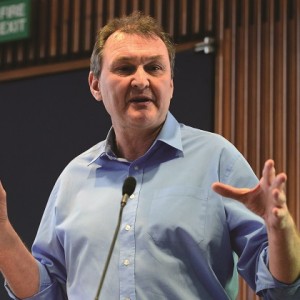The leaders of the Association of Teachers and Lecturers, National Union of Teachers and National Association of Head Teachers have written to the prime minister today to demand additional school funding.
The intervention comes on the final day of a consultation on plans for a new national funding formula, which seeks to address historic regional variations in school funding.
According to the Institute for Fiscal Studies (ISF), schools face average cuts of 6.5 per cent over the course of this parliament as a result of rising cost pressures and frozen per-pupil funding.
A new report published by the organisation today has also claimed schools could face further cuts under the formula after 2020 – should current funding protections be dropped.

The government hopes its national funding formula will address historic variations between different parts of the country, but a lack of additional money into the overall education pot means some schools will lose money, while others gain.
In a joint letter, Mary Bousted, Kevin Courtney and Russell Hobby claim that while it is right a new funding formula is introduced for schools, the current proposals will “allocate less to some financially deprived children than the previous arrangements”.
But they added: “The exciting thing is that, with the right resources, these barriers can be overcome. This is being demonstrated every day in schools across the country. The Government should learn the lessons from schools that successfully challenge disadvantage to calculate the cost of their work and then provide the same resources for every school.”
The union bosses argue that the problem faced by schools is not the formula, but that the government is not investing enough in education in the first place.
The letter added the impact of this will “some become evident to every parent” when extracurricular activities and school trips are cut, class sizes grow, and experienced teachers are made redundant.
“This is not efficiency; this is impoverishment.”
Further funding cuts loom
The intervention comes as the IFS warns hundreds of schools face further funding cuts of up to 7 per cent beyond 2020 under the new formula.
The IFS has released a briefing note which questions a lack of detail about government spending beyond the end of this Parliament when certain protections for schools could wear off.
The watchdog warns that just 60 per cent of schools will be “on formula” by 2019-20 because of a 3 per cent cap on how much any school can lose over the next two years.
However, the IFS states that around 1,000 of the schools covered by the cap protection over the next two years could face “significant adjustments” of up to 7 per cent after 2019-20 in order to bring their funding down to the level specified in the formula.

Chris Belfield, one of the report’s authors, said the reform was always going to create “winners and losers” at a time of “severe pressure on school budgets”, but said there was “significant uncertainty” about the future funding position for large numbers of schools
“We are currently in the tightest four year period for per-pupil spending in English schools since at least the early 1980s,” Belfield warned, adding that detail of what is going to happen to school budgets after 2019-20 is a “big omission considering only 60 per cent of schools will be on the main formula in 2019–20”.
Uncertainty for the next parliament
The IFS has also warned that the date by which all schools would reach their formula level of funding could differ significantly as a result of the spending decisions of a future government.
For example, if per pupil funding is frozen in cash terms, as it is now, and the minimum funding guarantee of -1.5 per cent remains in place, almost all schools will reach their formula level of funding by 2029-30.

However, if there is a real-terms freeze to overall spending, all schools will get there by 2024–25, or by 2023–24 if there is 2 per cent real-terms growth.
Luke Sibieta, one of the report’s authors, said the government should be “applauded for making specific proposals and setting out the reasons for the choices it has made”.
“If fully rolled out across England, a national funding formula would ensure similar schools in different parts of the country receive a similar amount of funding. While this has been the ambition of successive governments, they have consistently shied away from the hard choices such a reform entails,” he said.








Your thoughts